Abstract
We evaluated the ability of the autoSCAN-W/A (MicroScan Division, Baxter Healthcare Corporation, West Sacramento, Calif.), in conjunction with the dried colorimetric Neg ID type 2 panel (DCP) and new rapid fluorometric Neg ID panel (RFP), to identify non-glucose-fermenting gram-negative bacilli by challenging the system with 310 previously identified reference strains. Of these 310 isolates, 286 organisms were in the DCP data base and 269 were in the RFP data base. Use of the DCP panels resulted in 118 (41.3%) correct and 64 (22.4%) incorrect first choice identifications at greater than or equal to 85% probability, 61 (21.3%) low-probability identifications, and 43 (15.0%) reports of unidentified organisms. The RFP system reported 135 (50.1%) correct and 25 (9.3%) incorrect identifications at greater than or equal to 85% probability and 109 (40.5%) low-probability identifications. Unidentified isolates (DCP system only) and isolates producing low-probability first choice identifications (both systems) required supplementary biochemical testing. Over half (37 of 64 [57.8%]) of the DCP misidentifications were due to four commonly isolated, saccharolytic organisms (Alcaligenes xylosoxidans subsp. xylosoxidans, Pseudomonas putida, Pseudomonas fluorescens, and Xanthomonas maltophilia), while 7 of 25 (28%) of misidentifications in the RFP system were due to P. fluorescens. Of note, the RFP system identified non-glucose-fermenting gram-negative bacilli within 2 h of panel inoculation, allowing additional conventional biochemical tests to be set up the same day on low-probability isolates, whereas only 13.5% of the DCPs could be read at 18 h, with the remainder requiring 42 h of incubation before reading. When organism identifications were recalculated with the updated RFP data base and revised software, only 8.1% of all 310 isolates were misidentified at greater than or equal to 85% probability while 77.1% of the isolates were now correctly reported at this same high probability.
Full text
PDF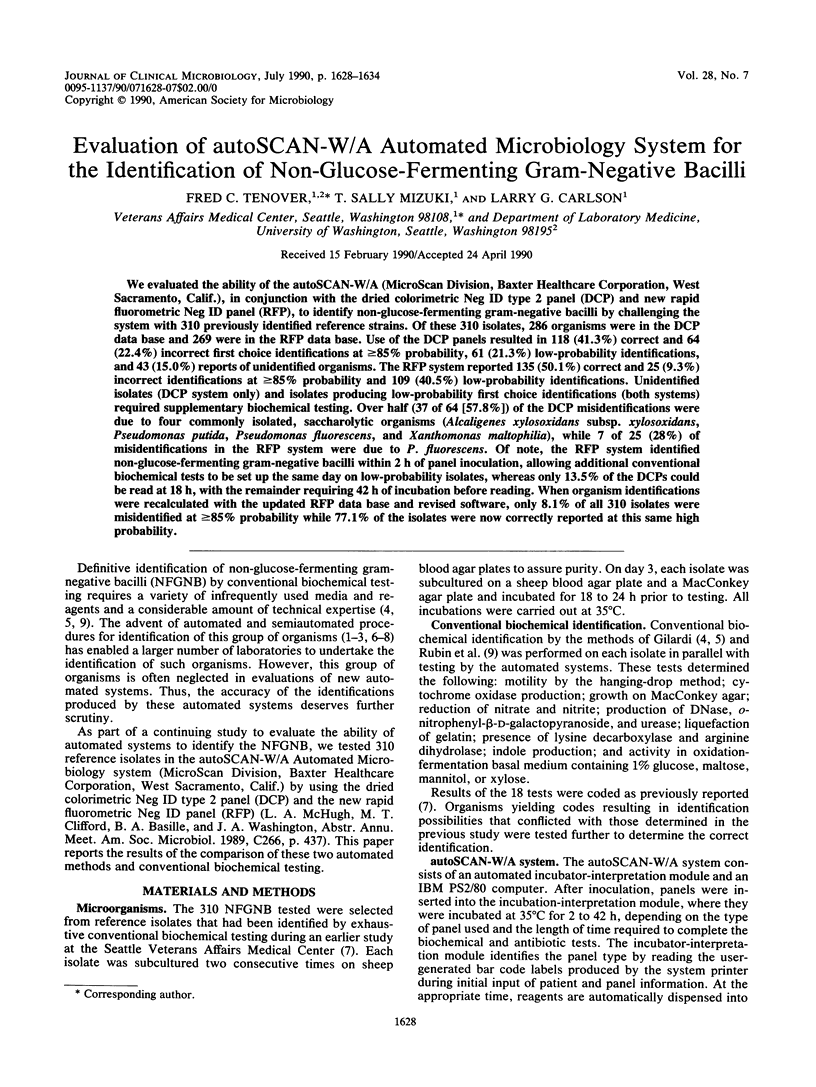

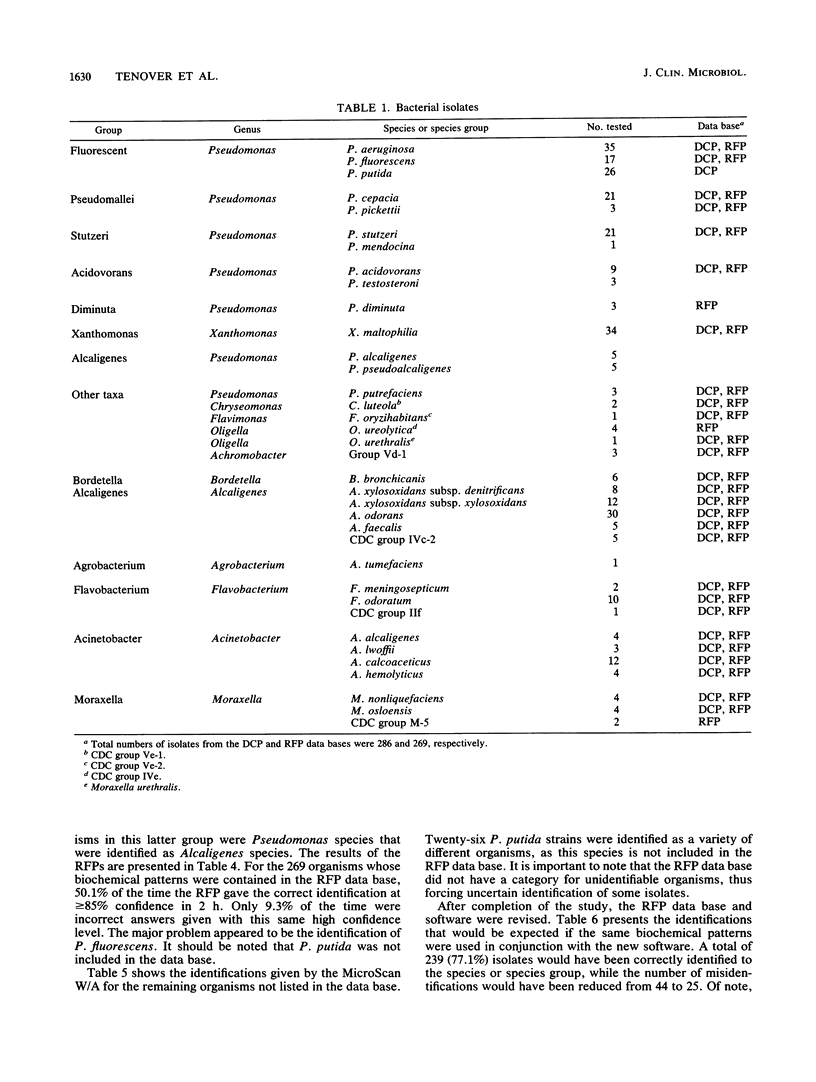
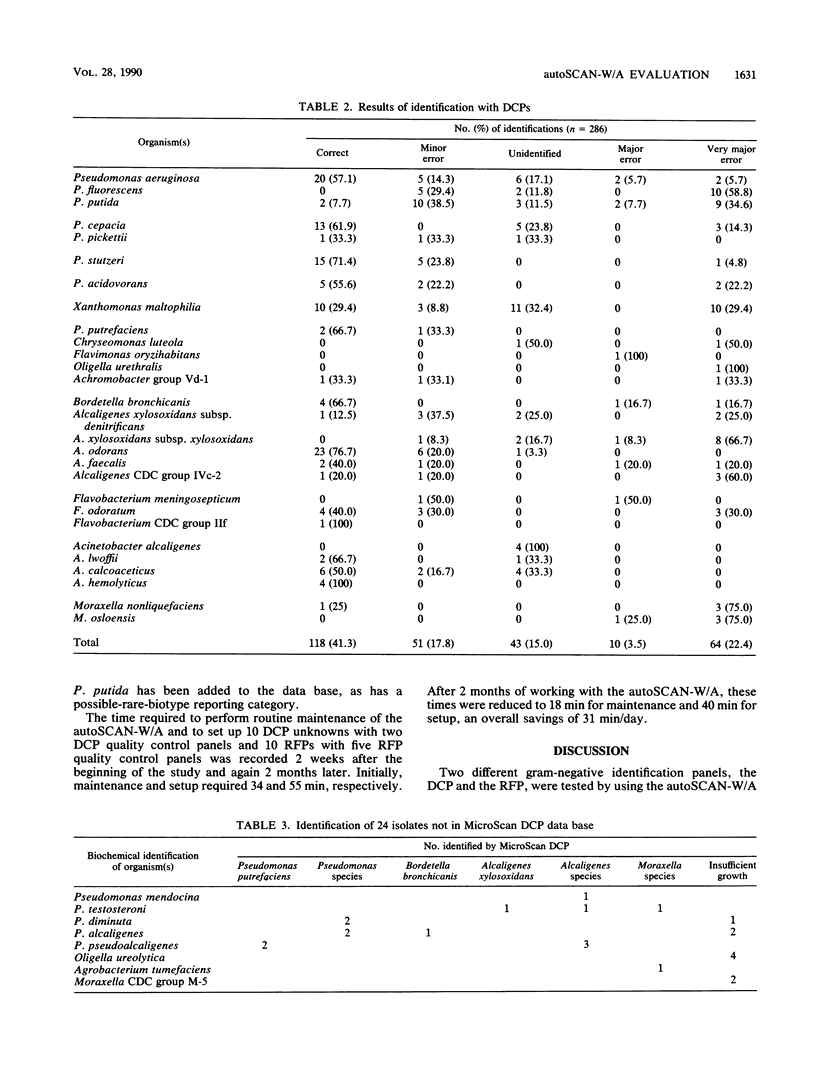
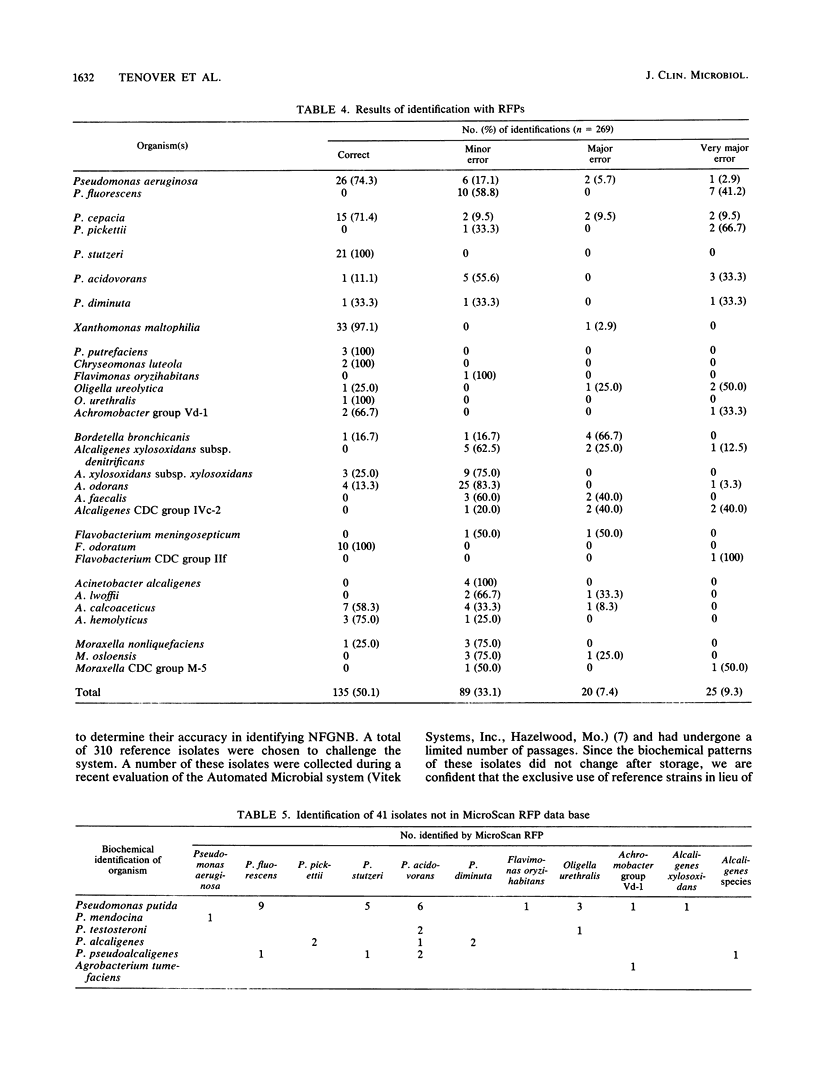

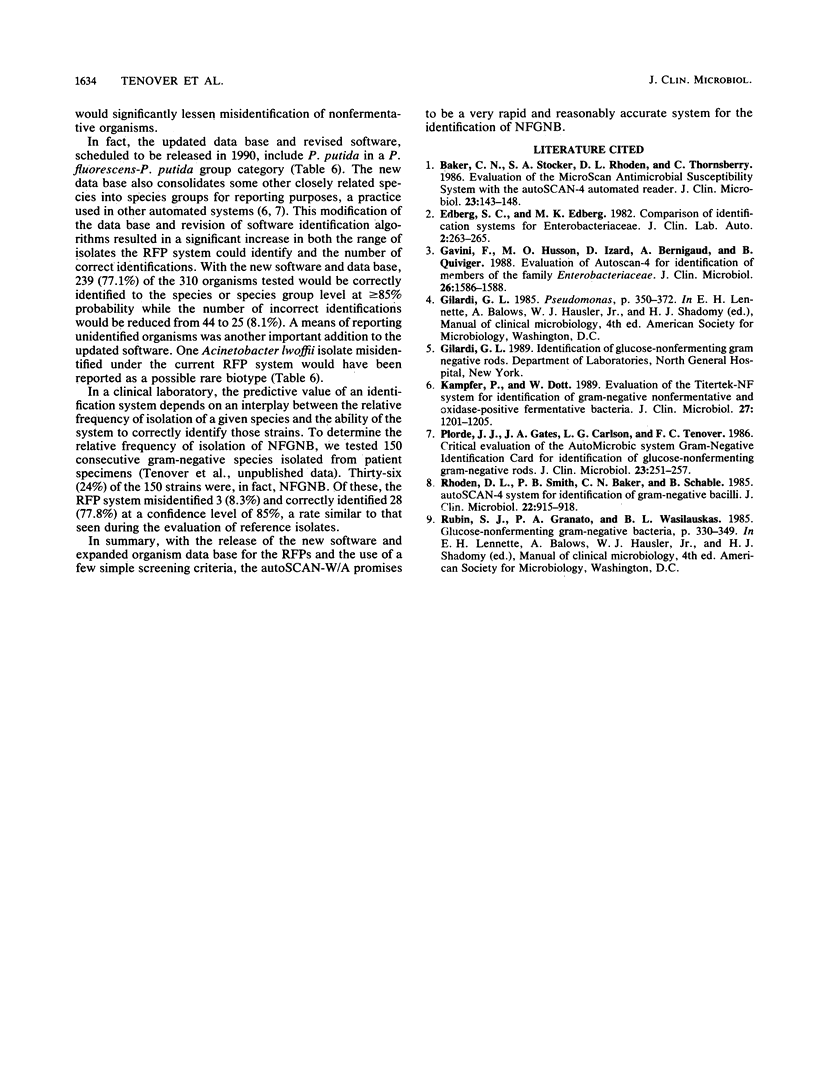
Selected References
These references are in PubMed. This may not be the complete list of references from this article.
- Baker C. N., Stocker S. A., Rhoden D. L., Thornsberry C. Evaluation of the MicroScan antimicrobial susceptibility system with the autoSCAN-4 automated reader. J Clin Microbiol. 1986 Jan;23(1):143–148. doi: 10.1128/jcm.23.1.143-148.1986. [DOI] [PMC free article] [PubMed] [Google Scholar]
- Gavini F., Husson M. O., Izard D., Bernigaud A., Quiviger B. Evaluation of autoscan-4 for identification of members of the family Enterobacteriaceae. J Clin Microbiol. 1988 Aug;26(8):1586–1588. doi: 10.1128/jcm.26.8.1586-1588.1988. [DOI] [PMC free article] [PubMed] [Google Scholar]
- Kämpfer P., Dott W. Evaluation of the Titertek-NF system for identification of gram-negative nonfermentative and oxidase-positive fermentative bacteria. J Clin Microbiol. 1989 Jun;27(6):1201–1205. doi: 10.1128/jcm.27.6.1201-1205.1989. [DOI] [PMC free article] [PubMed] [Google Scholar]
- Plorde J. J., Gates J. A., Carlson L. G., Tenover F. C. Critical evaluation of the AutoMicrobic system gram-negative identification card for identification of glucose-nonfermenting gram-negative rods. J Clin Microbiol. 1986 Feb;23(2):251–257. doi: 10.1128/jcm.23.2.251-257.1986. [DOI] [PMC free article] [PubMed] [Google Scholar]
- Rhoden D. L., Smith P. B., Baker C. N., Schable B. autoSCAN-4 system for identification of gram-negative bacilli. J Clin Microbiol. 1985 Dec;22(6):915–918. doi: 10.1128/jcm.22.6.915-918.1985. [DOI] [PMC free article] [PubMed] [Google Scholar]


